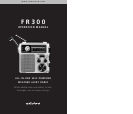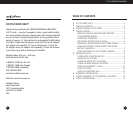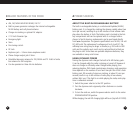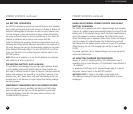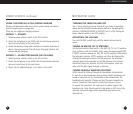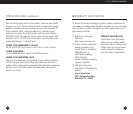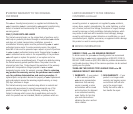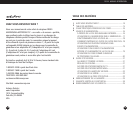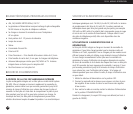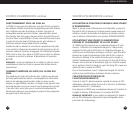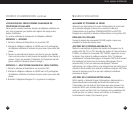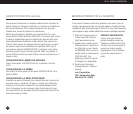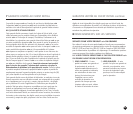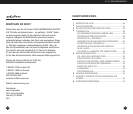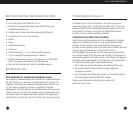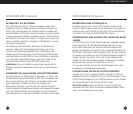
8
POWER SOURCES continued
9
5 OPERATION GUIDE
FR300 OPERATION MANUAL
USING THE FR300 AS A CELL-PHONE CHARGER
Because cell phone batteries vary in their current ratings, we cannot
specify charging rates or usage time.
There are two cellphone charging methods:
METHOD 1 – DYNAMO.
1. Slide the power selector switch to the OFF position.
2. Attach the cell phone to the FR300 with the cell phone extension
wire and correct plug tip for your phone.
3. Rotate the dynamo crank either clockwise or counter-clockwise at
about 2 turns per second. (The cell phone Charging Indicator will
activate during charging).
METHOD 2 – AC ADAPTOR/CHARGER (NOT INCLUDED).
1. Slide the power selector switch to the OFF position.
2. Attach the cell phone to the FR300 with the cell phone extension
wire and correct plug tip for your phone.
3. Plug in the AC adaptor/charger to its socket on the radio.
TURNING THE FR300 ON AND OFF
Turn it on by selecting a power source of your choice as described
above and by setting the power selector switch to the appropriate
position, DYNAMO/ADAPTOR or BATTERY.Turn it off by setting the
power selector switch to the OFF position.
ADJUSTING THE VOLUME
Turn the VOLUME control knob until the desired volume level is
heard.
TUNING-IN AM/FM OR TV STATIONS
Set the band selector slide switch to the AM, FM,TV1 or TV2 position.
Tune stations in with the TUNING knob, using the superimposed FINE
TUNING control as desired. For best FM and TV reception, fully extend
the telescopic antenna. FM/TV reception can often be improved by
rotating the telescopic antenna. For AM reception, the telescopic
antenna need not be extended, as the AM antenna is an internal,
directional, ferrite bar antenna. For best AM reception, rotate the
radio until the best signal strength is achieved.
TUNING-IN NOAA WEATHER STATIONS
NOAA stands for National Oceanic & Atmospheric Administration.
Its web site is http://www.nws.noaa.gov/nwr/. NOAA broadcasts are
heard in many, but not all, communities in the United States.The
broadcasts are normally 24 hours per day.The same channels are
used in Canada by Environment Canada, http://www.ec.gc.ca/.
To receive the broadcasts, the radio must be within range of the
broadcast site. Since these broadcasts take place on VHF,line-of-site
channels, the actual range varies, depending upon terrain and
obstructions.



